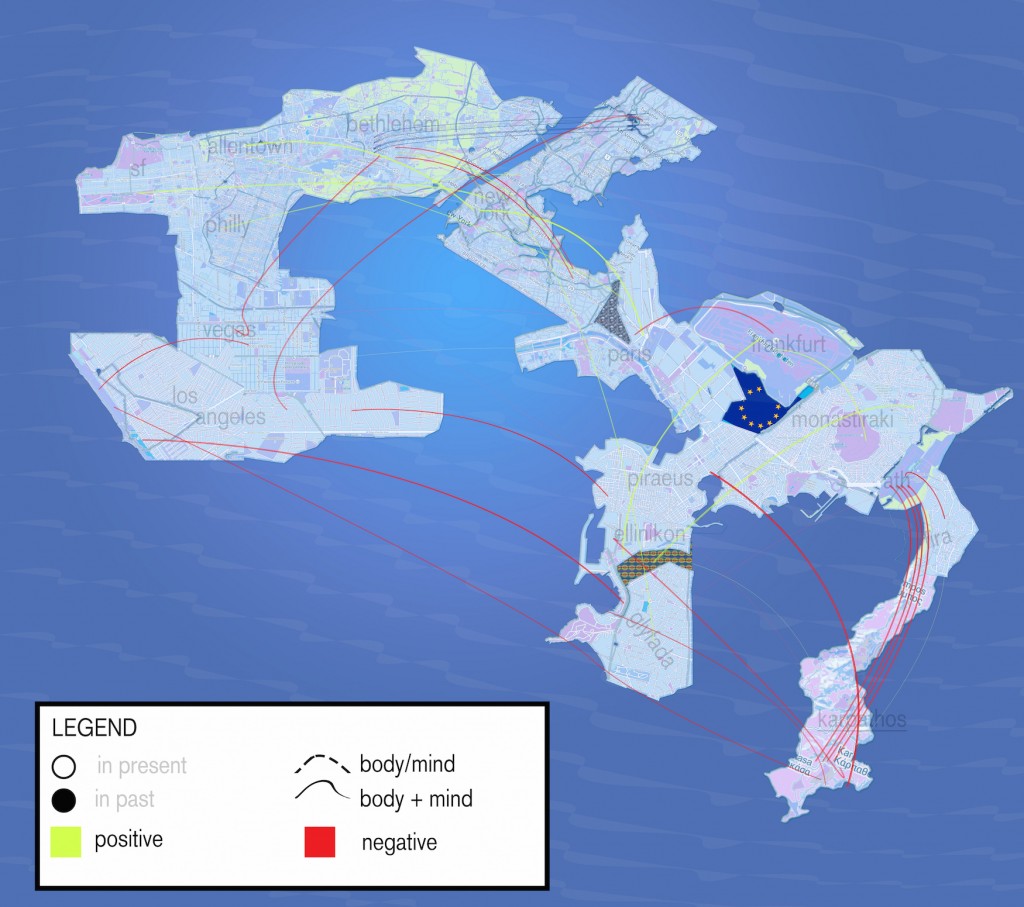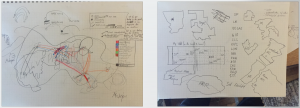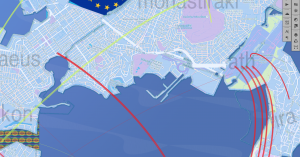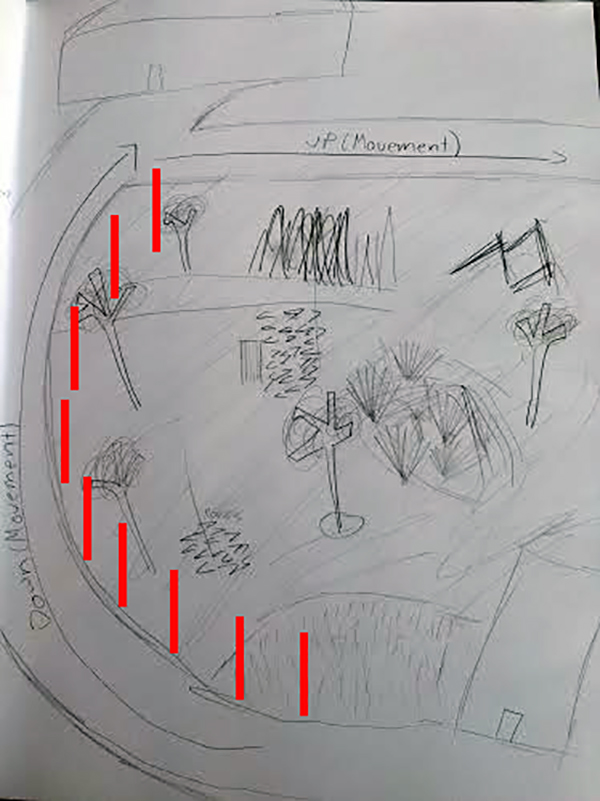 For this map, I wanted to start with concrete places I felt were important to me and work out a way of assembling them in a way representative of myself and my experiences. By and large I think one of the first things we consider when we think about a person are their relations to and understanding of place. However when one mentions a place — a city, village, neighborhood, w.e. — we often assume that that place in its entirety is representative of that person. This is largely untrue: in our minds we operate and define our present selves on the basis of locale and our relation to other locales with which we’re intimate. Conventional maps hide this as the important places we know well are dispersed by landforms and bodies of water. With this map I wanted to eliminate the irrelevant inbetween spaces and places in my life and put together only places important to me in a way that is continuous to myself. In a similar way I try to bring in a sense of continuity between feelings attached to places, i.e. you have a positive experience in one place in part because its associable with some other comparable experience you’ve had elsewhere (and vice-versa). I’m not saying this is always the case, however personally I think this comes up often when I look at things retrospectively.
For this map, I wanted to start with concrete places I felt were important to me and work out a way of assembling them in a way representative of myself and my experiences. By and large I think one of the first things we consider when we think about a person are their relations to and understanding of place. However when one mentions a place — a city, village, neighborhood, w.e. — we often assume that that place in its entirety is representative of that person. This is largely untrue: in our minds we operate and define our present selves on the basis of locale and our relation to other locales with which we’re intimate. Conventional maps hide this as the important places we know well are dispersed by landforms and bodies of water. With this map I wanted to eliminate the irrelevant inbetween spaces and places in my life and put together only places important to me in a way that is continuous to myself. In a similar way I try to bring in a sense of continuity between feelings attached to places, i.e. you have a positive experience in one place in part because its associable with some other comparable experience you’ve had elsewhere (and vice-versa). I’m not saying this is always the case, however personally I think this comes up often when I look at things retrospectively.
 As my surface, I assembled a variety of cutouts of places that I felt I knew at a pretty local level and/or were important to me into a new land mass of what is essentially “my world”. My goal was to make the placement fairly geographically representative and quite literal, i.e. if some terminal in JFK is the most eastern part of the U.S. I actually know, it would be adjacent to somewhere in France which is the most western part of Europe that I know, etc. etc. I tweaked the shapes and angled some land masses in too in order make the land mass more visually appealing; some placements are arbitrary, some symbolic, political, etc etc.
As my surface, I assembled a variety of cutouts of places that I felt I knew at a pretty local level and/or were important to me into a new land mass of what is essentially “my world”. My goal was to make the placement fairly geographically representative and quite literal, i.e. if some terminal in JFK is the most eastern part of the U.S. I actually know, it would be adjacent to somewhere in France which is the most western part of Europe that I know, etc. etc. I tweaked the shapes and angled some land masses in too in order make the land mass more visually appealing; some placements are arbitrary, some symbolic, political, etc etc.
I didn’t have much time to fully develop the sign system, but I’ve included the legend of an idea I’d like to work with as well as some representations on the map. The lines from place to place represent feelings evoked by something reminiscent of another place, color-coded according to whether or not that feeling was positive/negative and weighted in terms of reaction. The potential for dotted lines emphasizes instances where I felt present in terms of just body, just mind, or both.
Reading references:
– I think the emphasis on locality makes this a map. Originally I had intended on shoving outlines of cities together to form a land mass, but this would remove the intimacy between location and emotion that I allude to. The sign system would not be effective in this case, even if it would still *look* like a map.
– This proposes that places one does not know well can still create experiences that are evocative down the line
– I think this makes visible where my place and mind/memories have connected at times (and where they haven’t). The land mass concretizes the feelings of connectedness I feel between these spaces. And if the sign system was more elaborate & there were more lines, it would also map the major experiences that’ve recurred in my mind as well as a general feel for emotion across each place.
Artist references:
– I like’d Ed Ruscha’s clean & simple maps of intersecting streets in Los Angeles and San Francisco. His juxtaposed grids spoke to the repetition of urban landscapes, which frequently came to mind when assembling these places. Also aesthetically I liked the bundles of fine lines used to represent streets — the gratuitous use of thin lines between place to place in my sign system drew from this look, even if we are using them very differently



